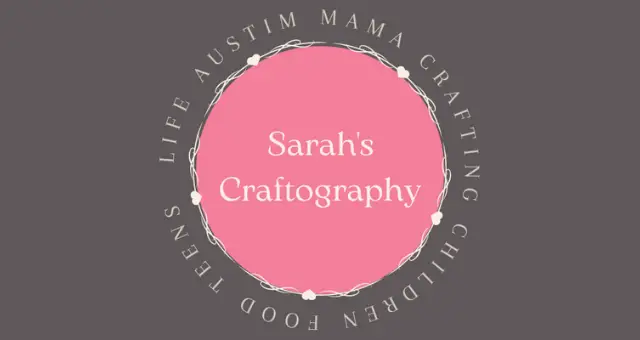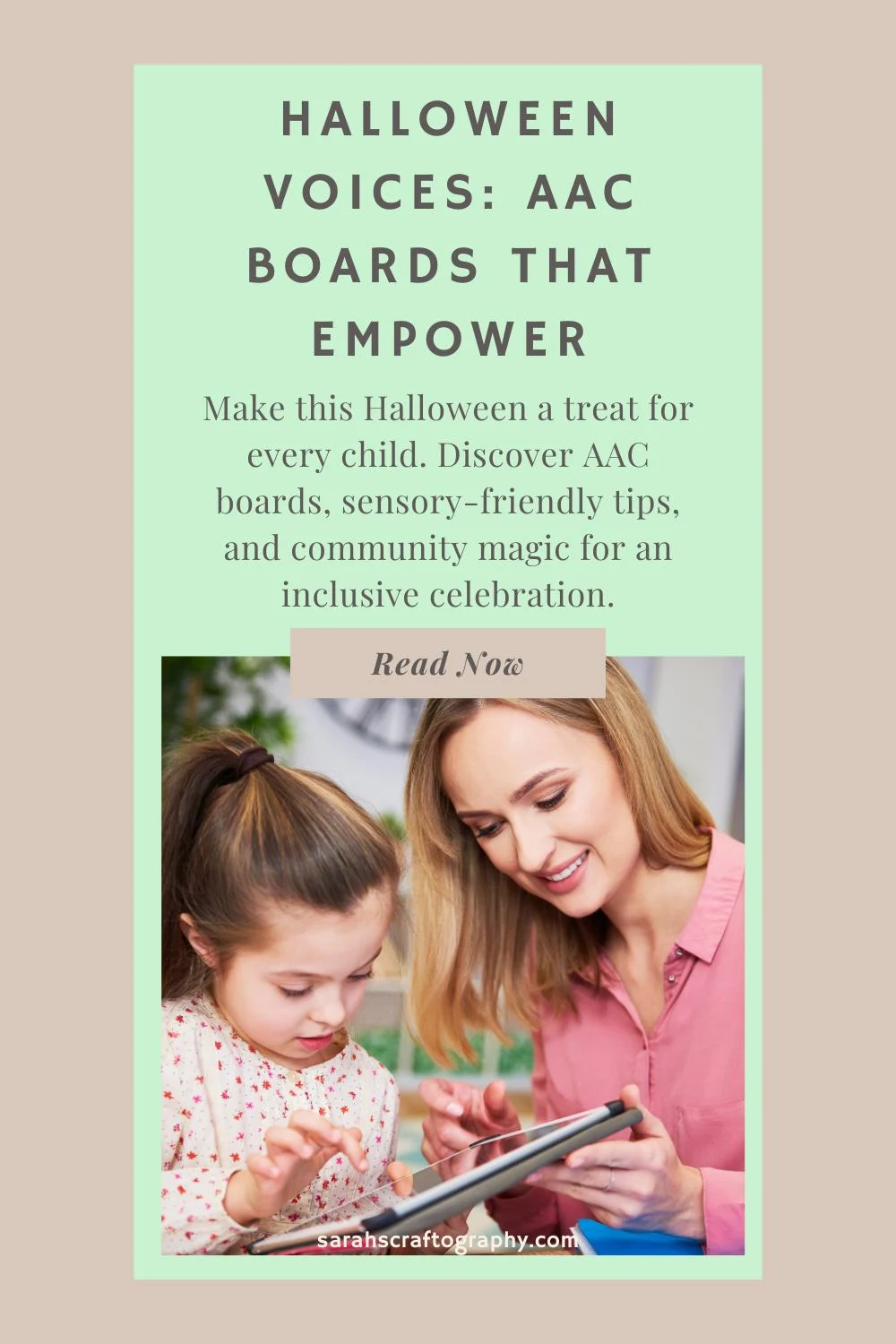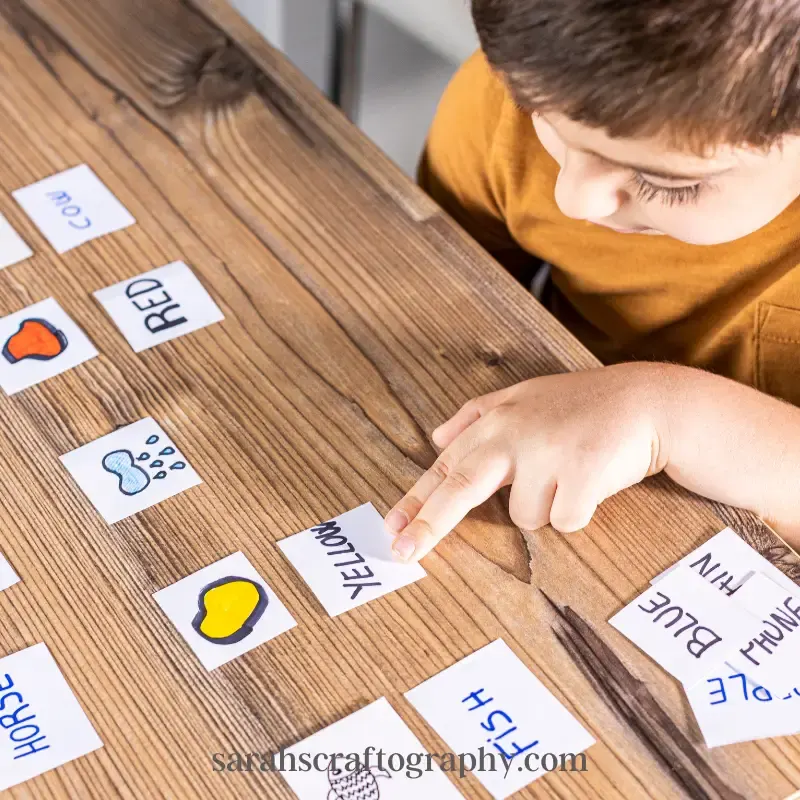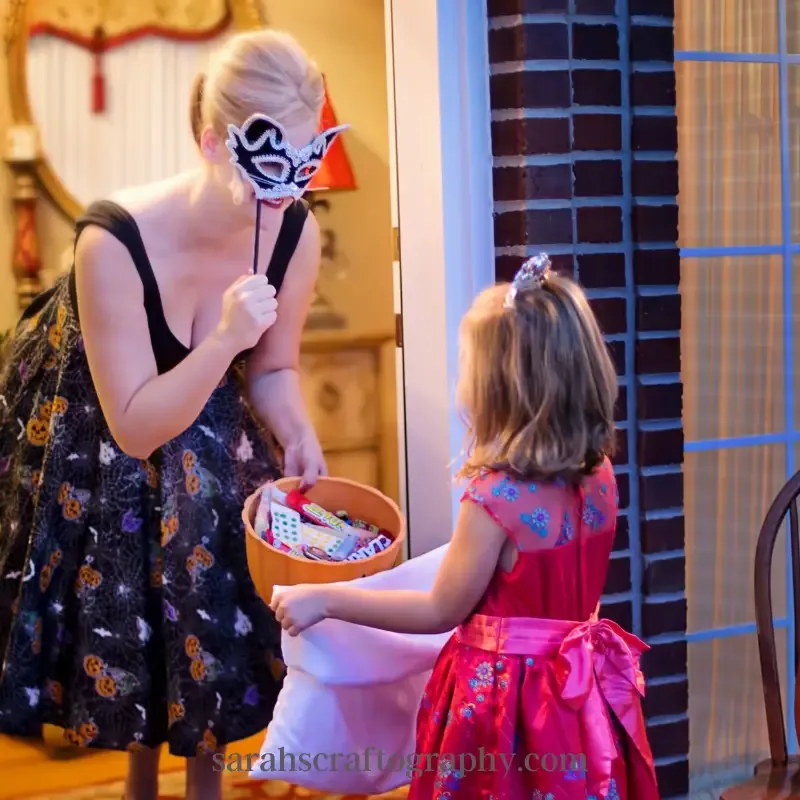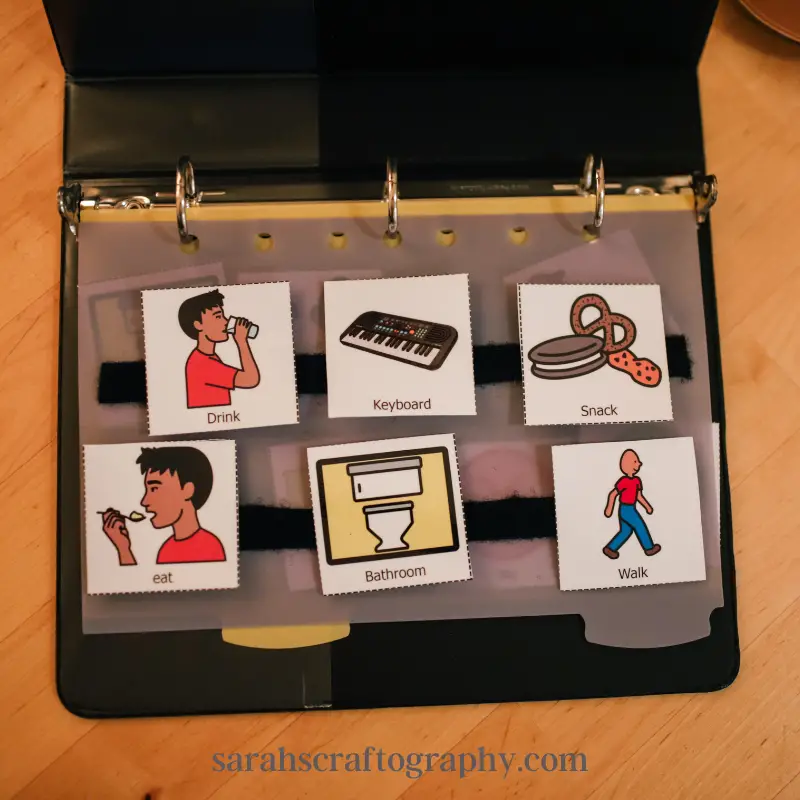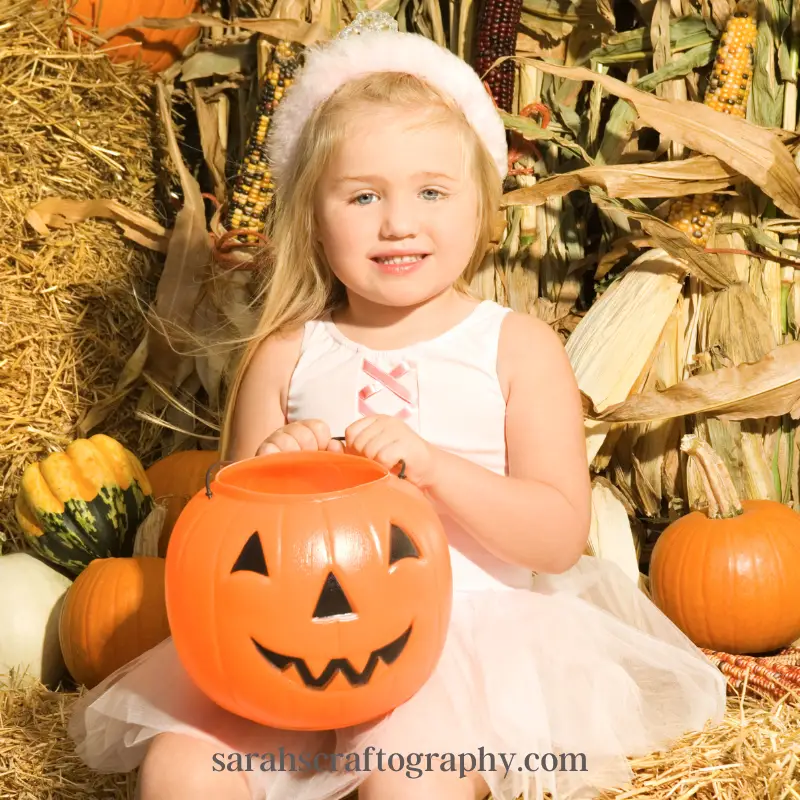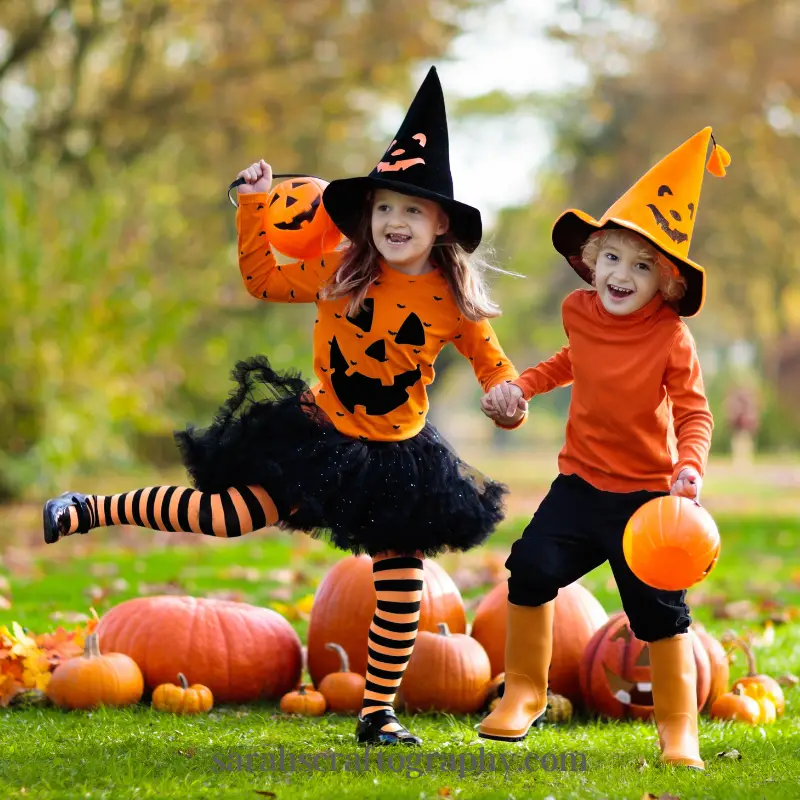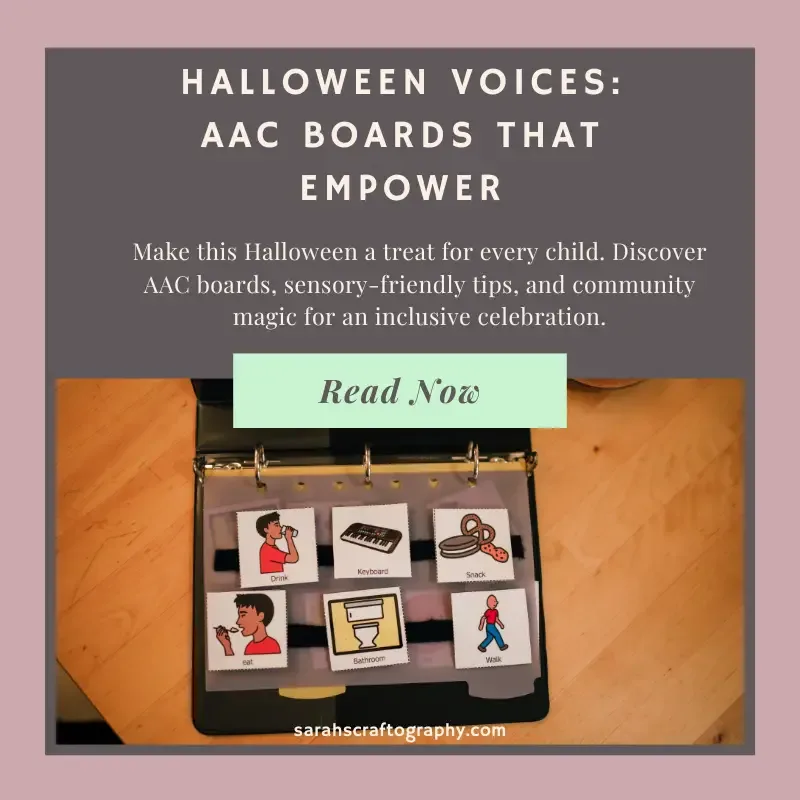Have you ever wondered how AAC boards can make Halloween more inclusive and enjoyable for everyone?
For many children and adults who use Augmentative and Alternative Communication (AAC), holidays like Halloween bring both excitement and challenges.
From saying “trick-or-treat” at the door to joining in games, parties, and conversations, communication is at the heart of the celebration.
AAC boards offer a fun and accessible way to make sure no one misses out on the magic of the season.
With themed vocabulary, visual prompts, and easy-to-use designs, these tools allow individuals to express themselves, share in the fun, and feel included in the traditions around them.
During a holiday filled with costumes, candy, and community, AAC boards open the door to connection and belonging.
So grab your pumpkin pail, slip on your costume, and let’s unlock the magic of Halloween together! 🎃
What is AAC and Why It Matters on Halloween
Halloween is full of costumes, candy, and excitement, but for children with autism who are non-speaking or minimally speaking, it can also feel overwhelming.
That’s where Augmentative and Alternative Communication (AAC) tools come in, helping every child take part in the magic of the season.
Imagine your child holding up a Halloween-themed communication board at a doorstep.
Instead of feeling left out, they can point to “Trick or Treat,” “Thank you,” or “Happy Halloween,” and instantly be part of the fun.
These boards are designed with bright images, festive phrases, and even options for gesture-based learners who rely on short, familiar sayings (or gestalts) to share their excitement.
Laminated and weather-proof, they’re ready to survive a spooky night of treats, costumes, and maybe even a little rain.
The best part?
They’re easy to keep on hand.
Clip them to a costume, attach them to a lanyard, slip them onto a wristband, or tuck them into a treat bag. wherever your child feels most comfortable.
Parents can also model how to use the boards, giving their children confidence with each knock at the door.
Practice makes it even better.
Try introducing the boards before Halloween night, letting your child “play pretend” with candy at home so they feel ready when the big night arrives.
Some kids will love colorful clipart, while others may prefer drawing their own spooky phrases on blank boards, flexibility keeps the experience personal.
With AAC, Halloween becomes less about barriers and more about belonging.
It’s about making sure every little ghost, witch, or superhero gets to share in the joy of the season.
Because when communication is accessible, the magic of Halloween is for everyone. 🕷️🍬
Giving Every Ghoul a Voice: Communication Board Design
Designing Halloween communication boards is more than just placing words and pictures on a page, it’s about creating a magical tool that helps every child feel included in the fun.
The foundation of these boards lies in the symbols and phrases.
Simple, recognizable options like “Trick or Treat,” “Thank You,” “Happy Halloween,” or even playful phrases like “More Candy” and “Scary Fun” capture the spirit of Halloween while giving children a way to share their voices.
Pairing these phrases with familiar symbols, pumpkins, ghosts, bats, witches’ hats, or candy corn, makes the boards festive, clear, and engaging.
Customization is key.
Some children respond best to bright, colorful images, while others prefer text prompts.
Understanding how your child learns and communicates makes the board more meaningful and keeps them engaged.
Letting them pick their favorite colors, choose symbols, or add a sticker of a pumpkin or black cat helps foster ownership and excitement.
For some children, touch is just as important as sight.
Adding textures, like felt stickers, bumpy paper, or raised outlines made with puffy paint, can provide extra sensory feedback.
Even glow-in-the-dark designs or scratch-and-sniff stickers can add to the magic.
Practical details matter too.
Laminating or waterproofing keeps boards safe from sticky candy fingers or rainy trick-or-treat nights.
Smaller boards can clip onto costumes, slip onto a lanyard or wristband, or tuck into a treat bag so they’re always within reach.
Boards with Velcro or magnetic pieces add flexibility, letting kids swap out symbols to match their mood or the activity at hand.
Most importantly, don’t overlook the fun.
When a board glows, sparkles, or feels like part of the costume, it stops being “just a tool” and becomes part of the Halloween experience.
With thoughtful design, these AAC boards give every little ghoul, witch, or superhero the chance to join in the excitement, because every child deserves to feel the magic of Halloween. 🎃
So, how will you design your child’s board to make this spooky season unforgettable?
Ghosts, Goblins, and Great Conversations
For children with communication needs, Halloween night can feel like a whirlwind of costumes, crowds, and candy.
Yet with AAC strategies, what might seem overwhelming can quickly become a night filled with connection and confidence.
The secret is not only in preparing ahead of time but in bringing those AAC boards to life during trick-or-treating.
Start by introducing the board well before the big night.
Practice runs at home, knocking on doors, pretending to hand out candy, or role-playing different scenarios, help children become comfortable with phrases like “Trick or Treat,” “Thank You,” and “Happy Halloween.”
This playful rehearsal builds fluency, eases anxiety, and makes the board feel like part of the costume rather than just a tool.
Parents and caregivers can strengthen the experience by modeling.
As you walk from house to house, point to symbols on the board to show how to use them in real conversations.
Try phrases like “I like your costume!” or “Let’s go to the next house!” so your child sees the board in action.
Encouraging them to observe and join in neighborhood chatter helps build both confidence and social skills.
Flexibility is key.
Trick-or-treating can be unpredictable, so keep extra cards or a larger backup board handy.
Make sure AAC boards are easy to reach, clipped to a treat bag, attached to a lanyard, or slipped onto a wristband, so they’re always ready when needed.
Their visibility also helps neighbors understand and respect your child’s preferred way of communicating.
In the end, AAC transforms trick-or-treating from a simple candy quest into something much bigger: an opportunity for children to express themselves, connect with others, and shine in their own way.
With patience, creativity, and a touch of Halloween spirit, those knocks on the door become more than just about sweets, they become moments of great conversations. 🎃👻
Making Halloween Comfortable for Every Child
Halloween is filled with sights, sounds, and surprises, glowing decorations, spooky music, crowded sidewalks, and costumes of every kind.
For children with autism, this sensory-rich environment can be both exciting and overwhelming.
A night that many kids look forward to can quickly turn stressful if the environment becomes “too much.”
But with thoughtful planning, families can turn potential triggers into opportunities for comfort and joy.
Every child experiences the holiday differently.
Some may find flashing lights or eerie sound effects unsettling, while others may dislike the feel of masks, itchy fabric, or face paint.
Recognizing these triggers ahead of time helps you create a plan that feels safe for your child.
Think about asking: What parts of Halloween light up your child’s eyes, and what parts make them withdraw?
AAC boards can play a role here too, not just for trick-or-treating, but for sensory needs.
A simple board with phrases like “Too loud,” “Break please,” “Take it off,” or “I need quiet” empowers children to share what they’re feeling in the moment.
Portable boards or laminated cards clipped to a costume or treat bag make those requests quick and easy.
Preparation is key.
Social stories, visual schedules, or even a short video walk-through of your planned route can ease uncertainty.
Practice wearing costumes well before the big night — maybe start with just the cape or hat and build up slowly.
If your child prefers, consider comfy alternatives: pajamas decorated with Halloween themes, a favorite hoodie paired with wings, or even just carrying a small prop.
The goal isn’t the “perfect costume” but a comfortable one.
Don’t forget to plan for breaks. Create a “safe zone” at home or in the car, a cozy space with headphones, a favorite blanket, or fidget toys.
Let your child know they can use their AAC board to request time there whenever they need it.
Some families even bring a small flashlight or glow stick as a “signal” for when it’s time to pause and regroup.
Most importantly, make the evening flexible. Maybe your child prefers visiting just a few trusted neighbors, attending a sensory-friendly community event, or celebrating at home with themed crafts and treats.
All of these are valid ways to enjoy Halloween.
So as you plan your night, think about this: How can you shape Halloween around your child’s comfort, rather than trying to fit them into the traditional mold?
When children feel safe, they’re free to enjoy the magic of the season in their own unique way. 🎃✨
Neighborhood Magic: Awareness in Action
Halloween doesn’t just happen in our homes, it comes alive on porches, sidewalks, and doorsteps.
That’s why community awareness is such a powerful part of making the night inclusive.
When neighbors understand and celebrate all the ways children communicate, they help create a kind of “neighborhood magic” where every child feels welcome.
Think about the impact a simple gesture can have.
A sign on the porch that says AAC-Friendly Home, or a neighbor who bends down, smiles, and patiently waits while a child points to “Trick or Treat” on their board, these small actions send a big message: your voice matters here.
Many families choose to use the blue bucket initiative to signal autism awareness, letting neighbors know their child may need extra patience or support.
While my own family doesn’t use this approach, I’ve seen how meaningful it can be for others.
The important thing is recognizing that families have different ways of advocating for their children, whether through blue buckets, AAC boards, or simple conversations with neighbors ahead of time.
Each method creates opportunities for compassion and understanding.
Imagine if your block set up a “sensory-friendly stretch” with dimmer lights and quieter music.
Or if a neighbor organized a mini practice run the night before, giving kids a chance to explore without the pressure of crowds.
These creative touches don’t just support children who use AAC, they strengthen the entire community.
This is where you come in.
Could you host a short conversation at your local school, church, or community center about AAC and inclusivity?
Could your family add a welcoming sign or prepare both candy and small non-food treats to meet different needs?
Even neighborhood kids can play a role by learning about AAC and practicing patience when a peer communicates in a different way.
Halloween is at its best when it’s about more than candy, it’s about connection.
Every neighbor has the chance to turn their porch light into a beacon of acceptance.
So as you plan your decorations, costumes, and candy stash, ask yourself: What can I do this year to make my neighborhood’s magic shine brighter for every child who knocks? 🎃✨
Inclusive Fun Beyond the Doorstep
Not every family spends Halloween walking from house to house.
Some prefer the safety and structure of a trunk-or-treat event, while others gather for a school or community party. The good news?
AAC and sensory-friendly strategies can shine just as brightly in these settings.
At trunk-or-treats, families often move from car to car in a parking lot.
This can actually make AAC use easier because boards can stay clipped to a treat bag or lanyard without getting lost in the shuffle.
Encourage your child to use simple phrases like “Happy Halloween!” or “That’s cool!” as they admire decorated trunks.
Organizers can help, too, by offering a quiet trunk or low-sensory zone where children can pause and regroup.
Even a trunk that hands out small non-food treats (like glow sticks or stickers) can make kids with allergies or sensory sensitivities feel included.
Halloween parties, whether at school, church, or a friend’s house, are another opportunity for inclusion.
AAC boards can be customized with social phrases like “I want to dance,” “Let’s play a game,” or “Can I have a snack?” to help children join group activities.
For hosts, a few simple adjustments, dimmer lighting, a corner with soft seating, quieter music, or even just explaining to volunteers what AAC boards are, can go a long way toward making children on the spectrum feel welcome.
For readers who might be planning one of these events, here’s something to keep in mind: not every child communicates in the same way.
Building flexibility into the environment, from how kids ask for candy to how they step away when it’s too much, creates a celebration that’s just as magical for every ghost and goblin.
So whether you’re attending or hosting, the question becomes: How can you help turn your event into a place where every child not only joins in, but truly belongs? 🎃👻
Wrapping Up the Halloween Magic
Halloween should be a time of joy, laughter, and memory making, not stress or exclusion.
With AAC boards, sensory-friendly strategies, and a little neighborhood awareness, every ghost, goblin, princess, and superhero can join in the fun.
Whether your family goes trick-or-treating, enjoys a trunk-or-treat, or celebrates at a party, the heart of the night is connection.
Now it is your turn.
I would love to hear from you!
Do you already use AAC or sensory supports during Halloween?
What tips, tricks, or stories can you share to inspire other families?
Drop your thoughts in the comments and let us keep this conversation going. 👇
If you found this post helpful, share it with your community on social media.
Together, we can spread awareness, spark ideas, and create more inclusive celebrations.
When every child’s voice is heard, Halloween truly becomes a treat for all. 🕸️🍬👻
If you loved this post and want to make your Halloween a little more magical, don’t forget to subscribe to my email list! When you sign up, you’ll get free printable AAC cards to help your child express themselves during trick-or-treating, parties, and more. Plus, you’ll be the first to know when new inclusive resources and family-friendly ideas are added to the blog.
Halloween Legends, Recipes And Craft Ideas
The Legends Of Halloween
Have you ever wondered about the legends of Halloween? With so many spooky legends behind Halloween! I want to share a few of my favorites!
Horror Movies Sure To Set The Mood For Halloween
Are you looking for a horror movie that send chills down your spine to set the mood for Halloween? Check out these movies to watch!
